
If you have dived in Mexico before, please share your experiences: Dive spots you would recommend, which Dive Center you used, Fishes & Diving, Visibility, Currents, etc. Please post your comments in the section below, by doing so you will help fellow divers to plan their next trip


Scuba Dive the Yucatán Peninsula photograph by Scubadivingnomad
When we think of a scuba diving destination, most of us will have a similar image about what diving is like at this specific destination. Mention the Bahamas and most divers thoughts go along the same track, same with the Cayman Islands, and even Thailand. However, for Mexico, it is different.
Indeed, most people would think of the east coast diving of Mexico, but what about the west coast? Mexico offers divers a number of vastly different experiences from east to west. You can dive the Yucatán Peninsula with its famous Mesoamerican Barrier Reef just offshore in the Caribbean Sea and move inland to dive the landlocked Cenotes.
On the West coast, you have the diving of the Mexican Rivera along the Pacific Ocean and the Sea of Cortez. While the Caribbean Sea gives you dolphins, the Sea of Cortez gives you sea lions. High rise resorts in Cancun or liveaboards visiting Guadalupe island or the Socorro Islands. These are the contrast that you will see diving Mexico.
In this page you will find more detailed information about scuba diving in Mexico.
Table of contents
Best Dive Review
The Yucatán Peninsula and the Baja Caifornia Peninsula are the areas that divers flock to in Mexico. However, each of these places have a number of outstanding destinations, and these each have a dozen dive sites worthy of mention. In fact, dive sites from these destinations show on many “best dive sites” lists.
This is a short overview of just a few places to dive. The Yucatán Peninsula and the Baja Peninsula each have a destination page that you should check out which has more details. Here are a few selections to get you started:
- Guadalupe: A liveaboard destination with the best cage diving in the world. Isla Guadalupe is a volcanic island located 241 kilometres (150 mi) off the west coast of Mexico’s Baja California Peninsula and some 400 kilometres (250 mi) southwest of the city of Ensenada.
- The Socorro Islands: Also a liveaboard destination it is generally reached by way of Cabo San Lucas at the southern tip of the Baja. Also called Revillagigedos Islands, Sharks and mantas compete for your attention within a dramatic underwater seascape. Expect visibility of over 100 feet.
- Cabo San Lucas: Cabo is located at the very tip of the Baja Peninsula where the Pacific Ocean and the Sea of Cortez meet it offers an interesting range of diving for divers of all skill levels. It is considered one of the finer destinations in Mexico. Famous for the jet setting crowd, it is also an outstanding dive destination.
- Gran Cenote: Cenotes are a type of sink hole. The roof of an underground river collapses exposing it to the surface. Cenotes offer an exciting substitute for an open water ocean dive. Gran Cenote is near Tulum Riviera Maya Mexico which is on the Yucatán Peninsula. Considered one of the best examples of a Cenote dive. It is also very easy to reach by car.
- MUSA (Museo Subacuático de Arte): MUSA is the largest underwater art exhibit in the world with over 500 permanent life-sized and monumental sculptures. Located near the end of the Mesoamerican reef off the coast near Cancun.
- Bull Shark Point Playa Del Carmen: Want to dive with Bull sharks? Then Playa Del Carmen south of Cancun is where you need to go. Each year from November to March pregnant females Bull sharks come here to give birth. And where the girls go, the boys will follow. Bull sharks are considered one of the most dangerous of the sharks. While the Great White has a reputation, it is the bull shark that is responsible for the majority of the shark attacks.
How to dive Mexico?
The best way to dive Mexico is from land based resorts. The exception for that is if you are diving Guadalupe island or the Socorro Islands. These destinations are the primary liveaboard destinations in Mexico. Both of these destinations are worth the long trip out to these isolated islands. When the weather is too rough for these locations, the liveaboards usually relocate to the Sea of Cortez.

Diving a Cenote by Monterey diver
The best way to dive Mexico totally depends on the type of scuba diving you are looking for. East or West ? The Yucatán Peninsula or the Baja Peninsula?
Best time to dive in Mexico
There is no single answer for when is the best time to dive Mexico as it will vary greatly from the east coast to the west coast.
Guadalupe island or the Socorro Islands do have diving seasons that are not year round due to sea conditions. Indeed, if seas are too rough, no liveaboard will venture there, they will rather stay closer to the coast. Again, check the related Baja Peninsula page for more details.
On the eastern coast of Mexico, most scuba diving can be done year round, with some months being better than others. Your best option is to check the diving detail page for the Yucatán Peninsula.
Top liveaboards in Mexico according to divers reviews
Dive courses
Mexico is a great destination to learn how to dive. A full range of classes are available. Besides the Open Water Diver training, you will find that the Advance Open Water, Deep diver and cavern diver are some of the more popular choices.
Scuba Diving conditions
Yucatán side has fairly steady conditions year round. For open-ocean dives off the peninsula , visibility can range from 12 meters/40 feet in the winter to 27 meters/90 feet in the summer. This gap gets lower the further away from shore you are. The dive sites off Cozumel generally offer 100+ feet of visibility year round. Visibility in the cenotes and caverns is only limited by the quality of your vision. Water temperatures average 25-28° C/77-82° F in winter and 27-29° C/81-85° F in summer.
Technically, there is diving along the coast of the Baja Peninsula year round, but the conditions can vary greatly between locations. Surface conditions in the winter months in the northern sections are best for experienced cold water divers.
There is year-round diving in the southern portions of the Sea of Cortez. The best time of the year being late June to early November. September and October brings seas that are flat and visibility peaks at 60 feet or more. The surface temperatures reaches 85F.
The area is known to have a thermocline. It is closer to the surface in the winter months but still within range of advance divers in the warm water months so a full 3mm wetsuit is suggested even when the surface temperature is warm.
In winter, surface water temperatures drop to 65 to 70F, so you’ll need a 5mm or 6mm full wetsuit with hood and gloves. The Seas can kick up to two to three feet, and the visibility drops to an average of 30 to 50 feet due to plankton blooms. However, the bloom bring in gray whales and whale sharks.
Snorkelling in Mexico
Many of the dive sites near shore are suitable for snorkeling. The MUSA has a section designed for snorkelers. The Cenotes are also generally great for snorkeling. Snorkeling sites on the pacific side of the Baja are few. However, in the southern Gulf of California snorkel sites are common.
Fishes and Coral
The east coast is typical Caribbean Sea coral and marine life. Plus the migrating whale sharks and bull sharks. The Baja dive sites have kelp forest in areas and a rocky seascape. Still the marine life is plentiful. Sharks, Mantas, and sea lions are attractions for divers.
Diving Safety
If you are planning an upcoming dive trip or travelling to Mexico, it is a really good idea to invest in travel insurance for scuba diving, because you never know what could happen and when you might need it (because accidents do happen!). I recommend this diving insurance as they offer worldwide coverage and focus on providing scuba divers a quality insurance and medical assistance service.
Both the east and west coast of Mexico offer outstanding diving. The Baja experience is often more rustic with a wider range of challenges. Still it has great diving for novice divers as well. The liveaboard experience is different then what you will find in the Caribbean. More isolated and a great thrill level.
The Yucatán offers consistent diving and warm water year round. There is a great selection of dive sites and many activities for after your dives. Examine both coast and select which one you will do now and which one can wait.
Photos Mexico
Travel Guide
Now that you know all about the underwater world, you might want to start planning your scuba holiday! Check out our Mexico Travel Review for information about how to get there, activities and excursions, where to stay, and more.

Diving Reviews for this region
Yucatán, Mexico
Mexico’s Yucatán offers outstanding reef diving, wall dives, drift dives and the largest underwater art museum in the world.
Baja California, Mexico
The Baja offers outstanding diving and is one of the best shark diving destinations for liveaboards.
 Destinations
Destinations




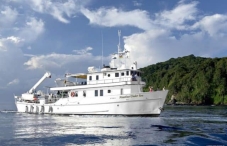

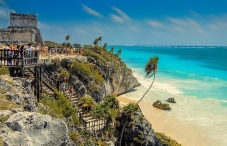
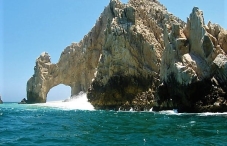
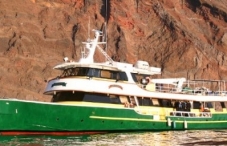
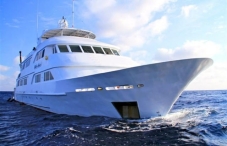

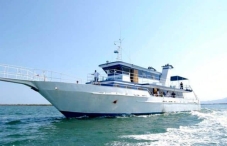
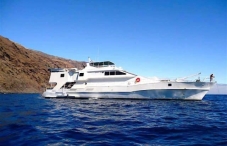


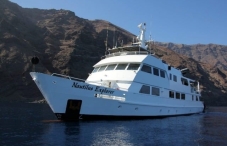
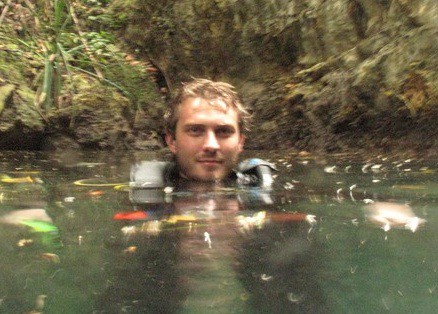




I dream about. Taking PaDi course